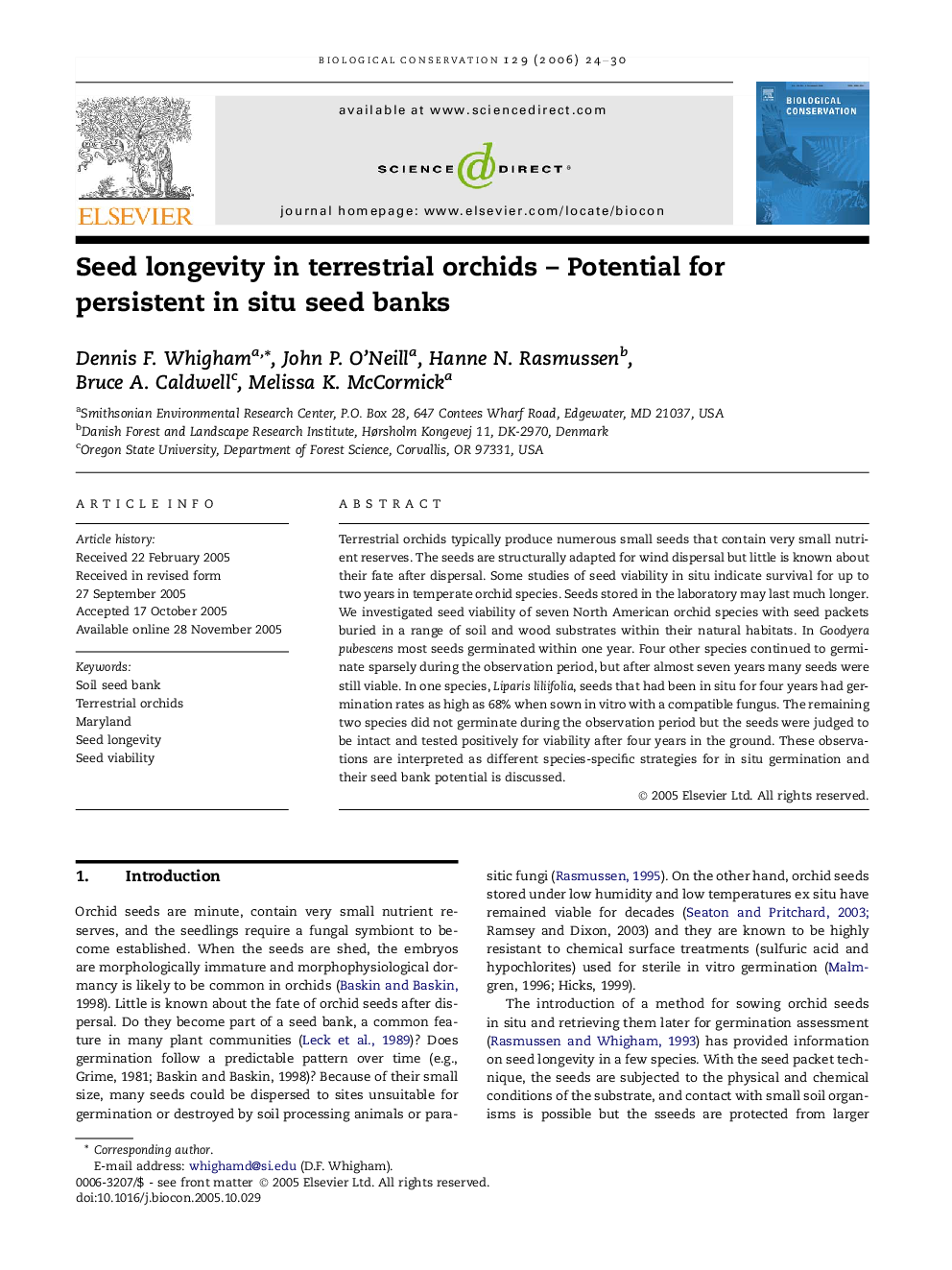| Article ID | Journal | Published Year | Pages | File Type |
|---|---|---|---|---|
| 4387790 | Biological Conservation | 2006 | 7 Pages |
Terrestrial orchids typically produce numerous small seeds that contain very small nutrient reserves. The seeds are structurally adapted for wind dispersal but little is known about their fate after dispersal. Some studies of seed viability in situ indicate survival for up to two years in temperate orchid species. Seeds stored in the laboratory may last much longer. We investigated seed viability of seven North American orchid species with seed packets buried in a range of soil and wood substrates within their natural habitats. In Goodyera pubescens most seeds germinated within one year. Four other species continued to germinate sparsely during the observation period, but after almost seven years many seeds were still viable. In one species, Liparis liliifolia, seeds that had been in situ for four years had germination rates as high as 68% when sown in vitro with a compatible fungus. The remaining two species did not germinate during the observation period but the seeds were judged to be intact and tested positively for viability after four years in the ground. These observations are interpreted as different species-specific strategies for in situ germination and their seed bank potential is discussed.
